
Mystery and Majesty: The Nazca Lines
Discover the ancient mystery of the Nazca Lines in Peru, where vast geoglyphs etched into the desert floor captivate travelers and spark centuries-old intrigue.
The Nazca Lines, located in the arid Peruvian coastal plain, are one of the most extraordinary and enigmatic ancient wonders of the world. These immense geoglyphs, etched into the desert floor by the ancient Nazca culture, depict a variety of figures, including animals, plants, and geometric shapes. The sheer scale and precision of these designs, best viewed from the air, leave visitors awestruck and pondering the mysteries of their creation and purpose. Spanning over 80 kilometers, the Nazca Lines have been remarkably well-preserved due to the dry and windless climate of the region. This UNESCO World Heritage site attracts scholars, archaeologists, and tourists alike, all eager to uncover the secrets of these ancient markings. Theories about their origin range from astronomical calendars to religious symbols, each adding to the intrigue and allure of this desert enigma. A visit to the Nazca Lines isn't just about seeing the geoglyphs; it's also about experiencing the surrounding landscape and culture. Nearby, the town of Nazca offers a glimpse into local life and provides amenities such as guided tours, small museums, and traditional Peruvian cuisine. The combination of historical significance and natural beauty makes the Nazca Lines a must-visit destination for any traveler exploring Peru.
Local tips in Nazca Lines
- Book a flight tour to get the best view of the Nazca Lines. Ground level viewing is limited.
- Visit the Maria Reiche Museum to learn more about the history and theories behind the lines.
- Wear sunscreen and bring water; the desert climate can be harsh.
- Combine your trip with a visit to the Chauchilla Cemetery for more insights into the Nazca culture.
- Plan your visit early in the morning to avoid the midday heat and crowds.
Mystery and Majesty: The Nazca Lines
The Nazca Lines, located in the arid Peruvian coastal plain, are one of the most extraordinary and enigmatic ancient wonders of the world. These immense geoglyphs, etched into the desert floor by the ancient Nazca culture, depict a variety of figures, including animals, plants, and geometric shapes. The sheer scale and precision of these designs, best viewed from the air, leave visitors awestruck and pondering the mysteries of their creation and purpose. Spanning over 80 kilometers, the Nazca Lines have been remarkably well-preserved due to the dry and windless climate of the region. This UNESCO World Heritage site attracts scholars, archaeologists, and tourists alike, all eager to uncover the secrets of these ancient markings. Theories about their origin range from astronomical calendars to religious symbols, each adding to the intrigue and allure of this desert enigma. A visit to the Nazca Lines isn't just about seeing the geoglyphs; it's also about experiencing the surrounding landscape and culture. Nearby, the town of Nazca offers a glimpse into local life and provides amenities such as guided tours, small museums, and traditional Peruvian cuisine. The combination of historical significance and natural beauty makes the Nazca Lines a must-visit destination for any traveler exploring Peru.
When is the best time to go to Nazca Lines?
Iconic landmarks you can’t miss
Plaza de Armas de Nazca
Experience the vibrant heart of Nazca at Plaza de Armas, a park steeped in culture and history, perfect for relaxation and exploration.
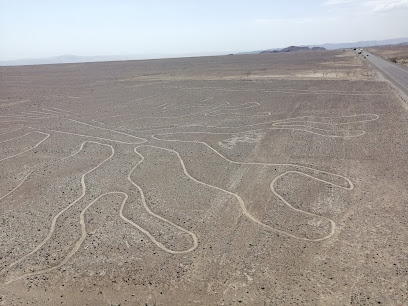
Mirador De Las Líneas De Nazca
Explore the ancient Nazca Lines from the Mirador De Las Líneas De Nazca, offering stunning views and rich historical significance in the heart of Peru.
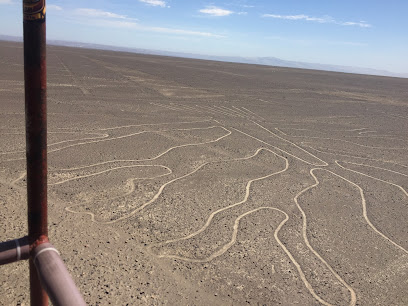
Aeronasca - Nazca Lines - Lineas de Nazca
Discover the enigmatic Nazca Lines, ancient geoglyphs etched in the Peruvian desert, offering a glimpse into a mysterious past from above.
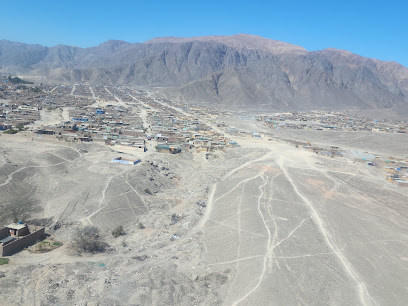
Museo Maria Reiche
Explore the mysteries of the Nazca Lines at Museo Maria Reiche, a captivating museum dedicated to the research and legacy of Maria Reiche in Peru.
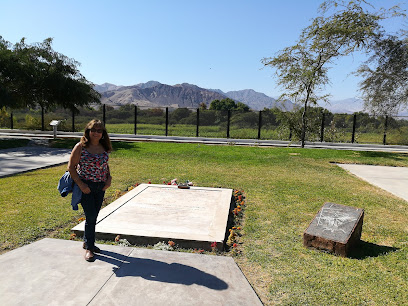
Museo Arqueológico Antonini
Explore the rich heritage of the Nazca civilization at Museo Arqueológico Antonini, a must-see archaeological treasure in Nazca, Peru.
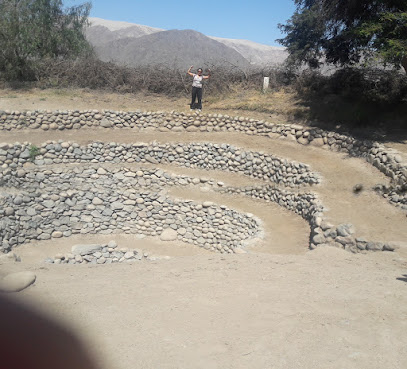
Acueductos de Cantalloc
Explore the Acueductos de Cantalloc, an ancient engineering marvel in Nazca showcasing sophisticated water management systems of the Nazca civilization.
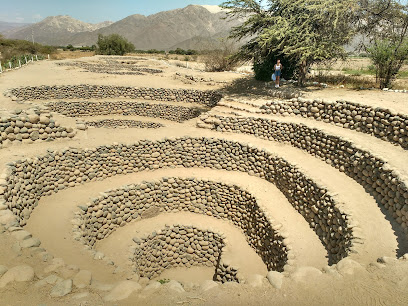
Los Paredones
Explore Los Paredones, an extraordinary archaeological site in Nazca, Peru, revealing the legacy of the Inca civilization amidst stunning desert landscapes.
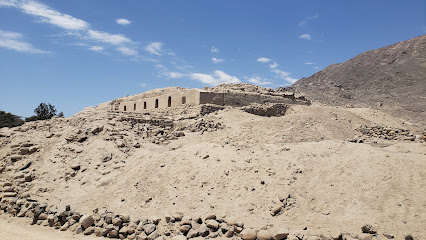
Chauchilla Cemetery
Explore the rich history and mystery of Chauchilla Cemetery, a captivating archaeological site showcasing ancient Nazca culture and its intriguing burial practices.
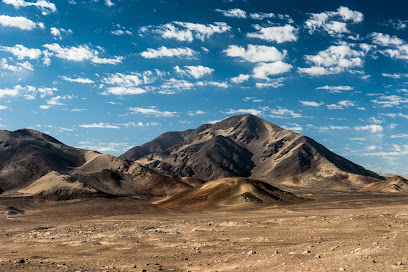
Ciudad Perdida de Cahuachi
Explore the mystical Ciudad Perdida de Cahuachi, an ancient ceremonial center of the Nazca civilization, set against Peru's breathtaking desert landscape.
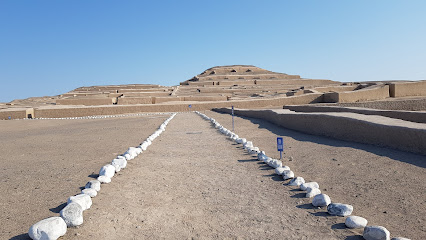
Nazca Spider
Explore the Nazca Spider, an extraordinary geoglyph in Peru that reveals the mysteries of ancient civilizations against a breathtaking desert backdrop.
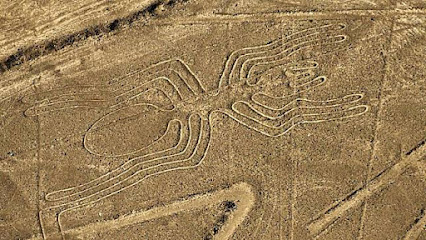
The Hummingbird (Nazca Lines)
Uncover the mysteries of the Nazca Lines at The Hummingbird, an ancient geoglyph reflecting Peru's rich cultural heritage.
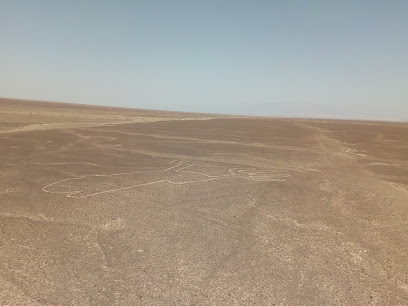
Loom in good faith
Discover the ancient mysteries of the Nazca civilization at Loom in Good Faith, a museum filled with rich history, art, and culture in Nazca, Peru.
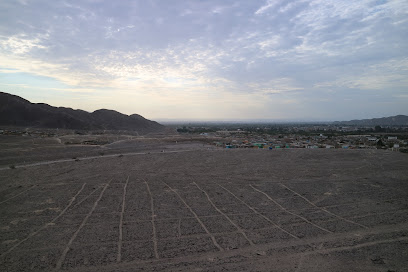
Cerro Blanco
Discover the breathtaking beauty and adventure at Cerro Blanco, an iconic sand dune near Nazca, Peru, perfect for thrill-seekers and nature lovers alike.
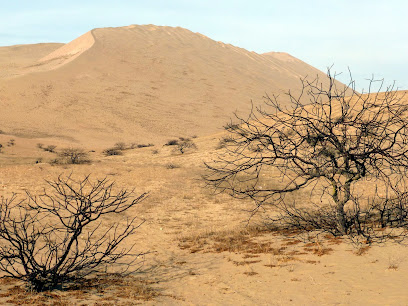
나스카 지상화
Explore the ancient Nasca Lines, a UNESCO World Heritage site in Peru that showcases pre-Columbian artistry and the stunning desert landscape.
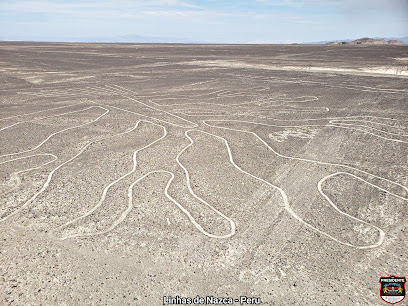
Nazca Spiral
Discover the Nazca Spiral, an ancient geoglyph in Peru that captivates visitors with its mysterious origins and breathtaking desert landscapes.
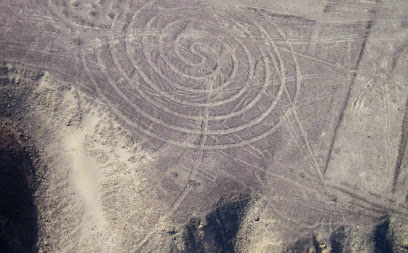
Unmissable attractions to see
Cahuachi Pyramids
Explore the majestic Cahuachi Pyramids, an ancient archaeological site that unveils the rich history of Peru's Nazca civilization amidst stunning desert scenery.
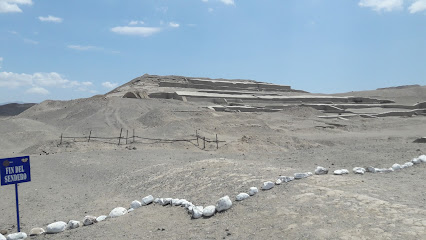
Planetario
Discover the cosmos at the Planetario in Nazca, where the mysteries of the universe unfold in a captivating museum experience.
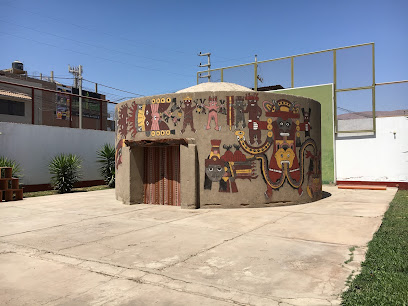
Saint Xavier of Nazca church
Explore the cultural and spiritual heritage of Saint Xavier of Nazca Church in Changuillo, Peru, a peaceful sanctuary for reflection and admiration.
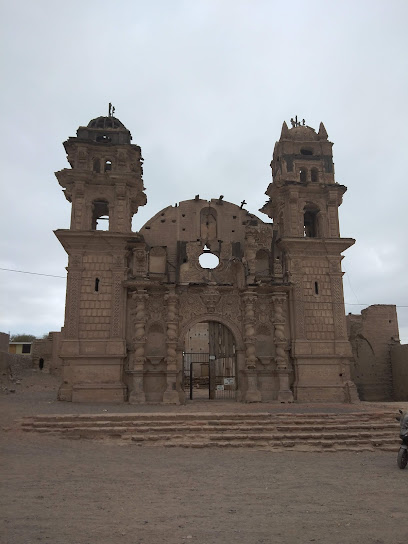
Iglesia de San José de Nasca
Experience the architectural beauty and cultural significance of Iglesia de San José de Nasca, a must-visit church in Peru's historic landscape.
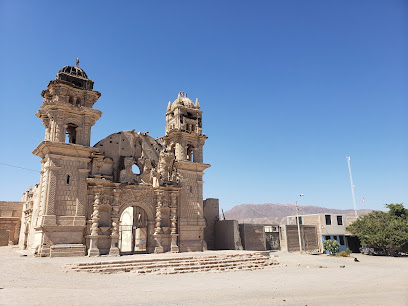
Ocangalla Aqueduct
Explore the Ocangalla Aqueduct, an ancient marvel of engineering amidst the stunning landscapes of Ocungalla, Peru. A true gem for history and nature lovers.
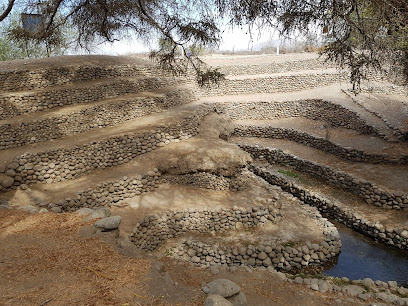
Mirador El Telar
Discover the stunning vistas of the Nazca desert at Mirador El Telar, a must-visit attraction for nature lovers and history enthusiasts alike.
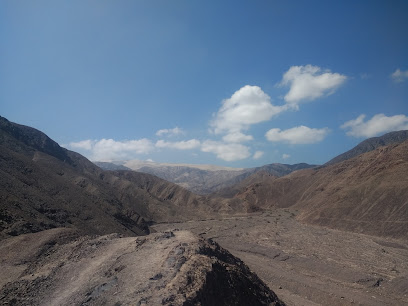
The Hummingbird (Nazca Lines)
Explore the Hummingbird Nazca Line, an ancient masterpiece in Peru's desert, revealing the artistry and mystery of the Nazca civilization.
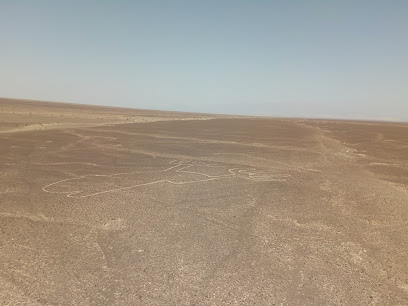
Loom in good faith
Explore the captivating world of the Nazca Lines at Loom in Good Faith, a must-visit museum in Nazca, Peru, revealing ancient mysteries.

Acueducto de Achaco
Explore the Acueducto de Achaco, an ancient marvel of engineering in Nazca, Peru, revealing the ingenuity of the Nazca civilization amidst stunning landscapes.

Nazca
Explore the ancient Nazca Lines, a UNESCO World Heritage site, and delve into Peru's rich history amidst stunning desert landscapes.
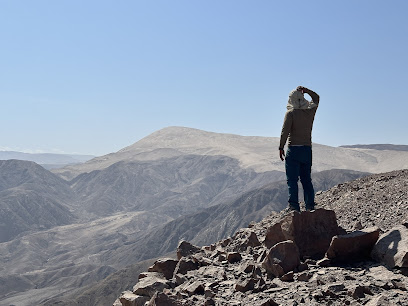
Mirador El Vigilante de Cantayoq
Discover the stunning views of the Nazca Lines at Mirador El Vigilante de Cantayoq, a must-see destination for adventure seekers and history lovers.
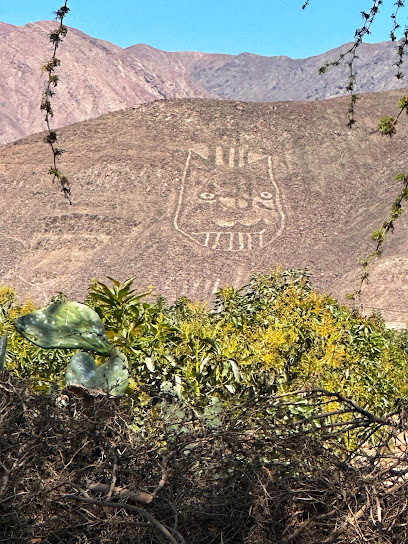
Nazca Spiral
Discover the breathtaking Nazca Spiral, an ancient geoglyph in Peru that unveils the mysteries of pre-Columbian civilization amidst stunning desert landscapes.
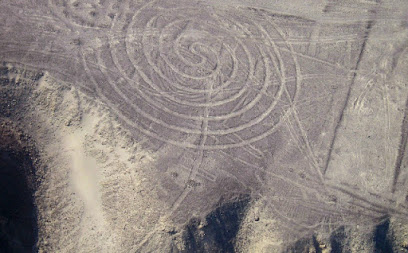
Mirador de Vista Alegre (Estatua de Jesús)
Discover breathtaking views and the iconic Statue of Jesus at Mirador de Vista Alegre in Nazca, a must-visit destination for every traveler.
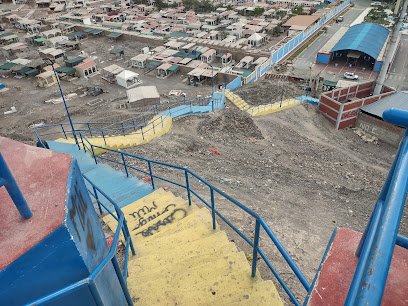
Ojos de Agua Cantalloc
Explore the ancient water management systems of Ojos de Agua Cantalloc, a breathtaking archaeological site that reveals the ingenuity of the Nasca civilization.
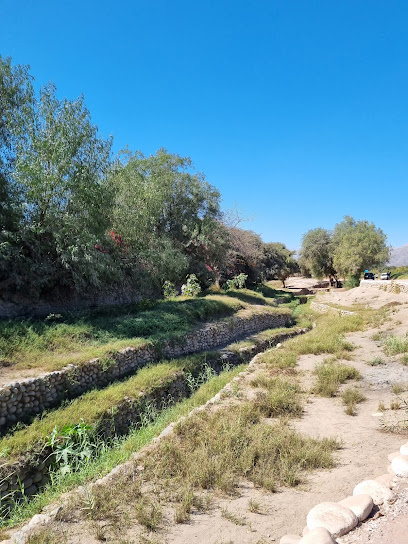
Desierto de Perú
Experience the breathtaking beauty of the Desierto de Perú, a unique desert landscape filled with adventure, wildlife, and stunning sunsets.
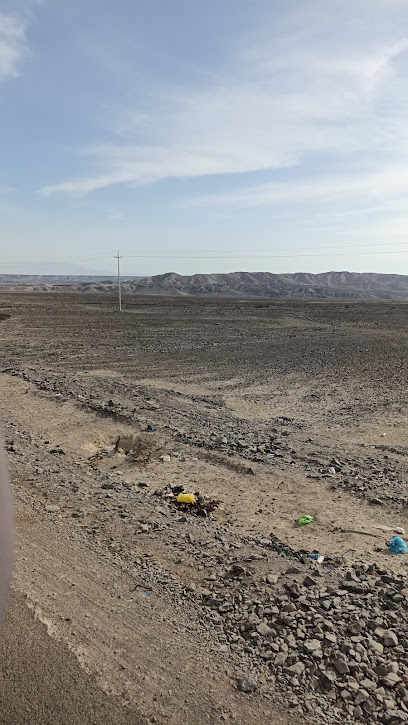
Essential places to dine
Pollería Rico Pollo
Discover Pollería Rico Pollo: A Culinary Delight Offering Succulent Rotisserie Chicken in the Heart of Nazca.
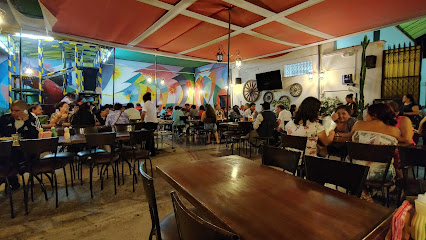
Casa Andina Standard Nasca
Experience unparalleled comfort and authentic Peruvian hospitality at Casa Andina Standard Nasca, your gateway to exploring Nazca's wonders.

Limon & Sazon
Discover the vibrant flavors of Peru at Limon & Sazon, a must-visit restaurant in Ica offering fresh seafood and delicious fast food.
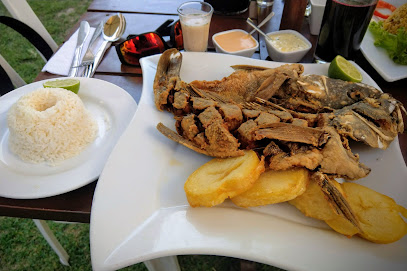
Los Paredones
Discover Los Paredones: A mesmerizing archaeological site in Nazca that reveals Incan history amidst breathtaking desert landscapes.
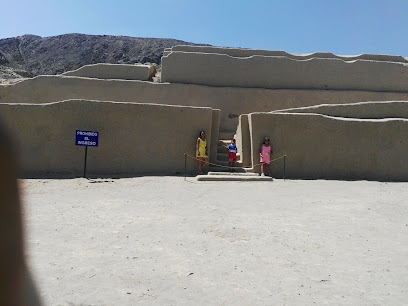
Mamashana Cafe Restaurante
Experience authentic Peruvian cuisine at Mamashana Cafe Restaurante in Nazca - where every dish tells a story.
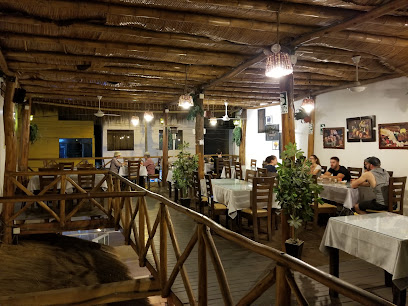
Hotel Nazca Lines
Discover comfort and local charm at Hotel Nazca Lines, your gateway to exploring Peru's enchanting geoglyphs and rich heritage.

La Kasa Rustika
Discover La Kasa Rustika: A premier grill restaurant in Nazca offering delicious local cuisine and an inviting atmosphere for every traveler.
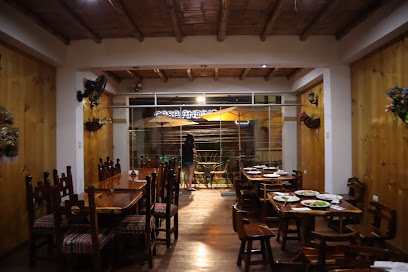
Hotel Majoro
Discover comfort and adventure at Hotel Majoro in Nazca, your gateway to the legendary Nazca Lines and rich Peruvian culture.

El Porton
Discover El Porton in Nazca - where authentic Peruvian flavors meet warm hospitality in a charming setting.
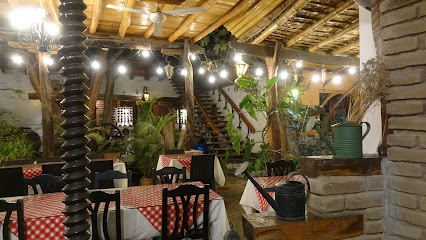
Nazca lines
Explore Peru's Nazca Lines—an ancient marvel of geoglyphs revealing mysteries of a bygone civilization in stunning desert landscapes.
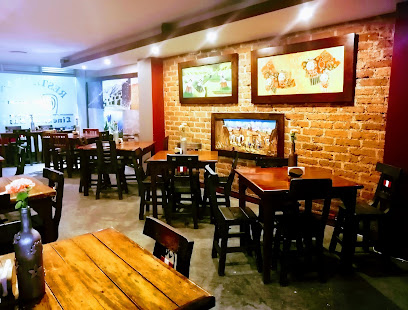
Casa Hacienda Nasca Oasis
Experience comfort and adventure at Casa Hacienda Nasca Oasis, your gateway to exploring Nazca's stunning landscapes and ancient mysteries.

Hotel Don Agucho
Discover comfort and convenience at Hotel Don Agucho in Nazca, your gateway to Peru's ancient wonders.

La Señora Limón Restaurant Cevicheria
Experience authentic Peruvian cuisine at La Señora Limón Restaurant Cevicheria in Nazca - home to exquisite ceviche and vibrant local flavors.
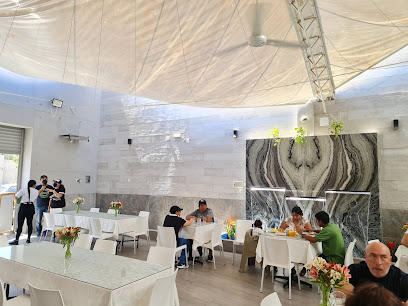
Pollería Orlando's
Discover the authentic flavors of Peru at Pollería Orlando's, where delicious rotisserie chicken meets vibrant local culture.
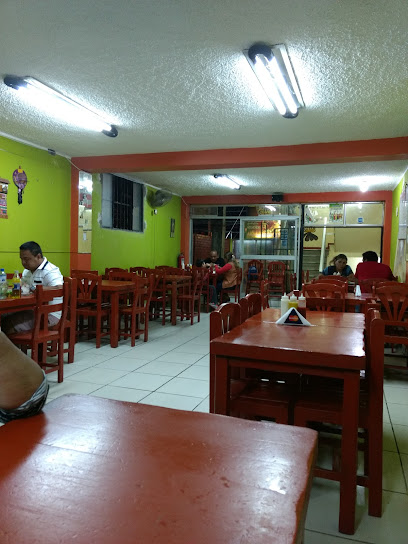
La Posada de Don Hono
Discover the heart of Nazca at La Posada de Don Hono – where comfort meets culture in Peru's enchanting landscape.

Markets, malls and hidden boutiques
Plaza de Armas de Nazca
Discover the charm of Plaza de Armas de Nazca, a serene park surrounded by historical architecture and vibrant local culture in the heart of Nazca.
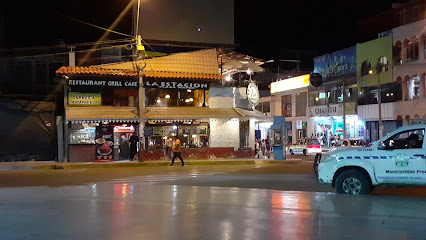
Nazca Lines
Explore the Nazca Lines, Peru's ancient geoglyphs that unveil the mysteries of a bygone civilization in a breathtaking desert landscape.
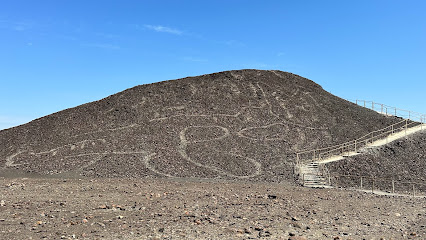
Mirador De Las Líneas De Nazca
Explore the breathtaking Mirador De Las Líneas De Nazca, where ancient geoglyphs meet stunning desert landscapes in Peru.
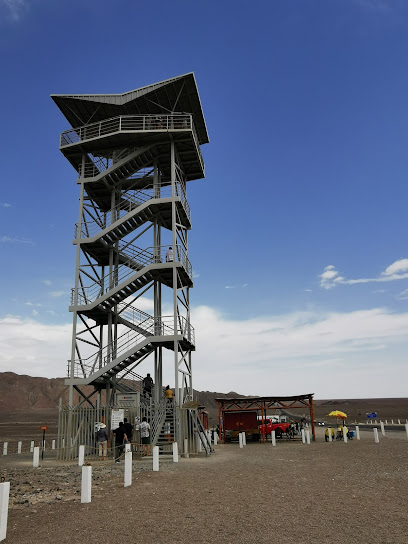
Nazca Spider
Explore the Nazca Spider: A breathtaking geoglyph that embodies the mystery and artistry of ancient Peru.

Distribuidora Perfomaq
Explore Distribuidora Perfomaq in Nazca for a comprehensive selection of hardware supplies and expert advice for all your DIY projects.
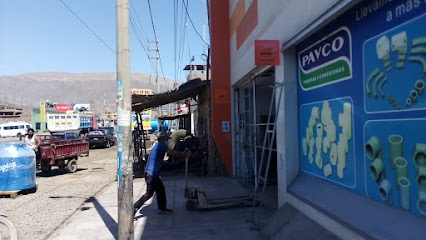
La Curacao
Discover the latest electronics at La Curacao in Nazca, where technology meets the vibrant culture of Peru.
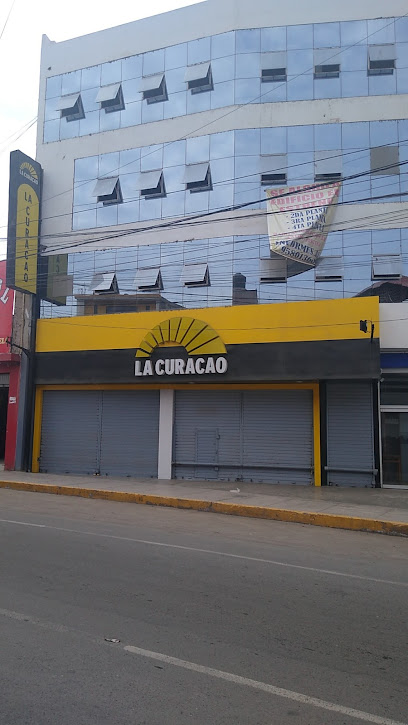
NAZCA LINES
Explore the ancient Nazca Lines, a UNESCO World Heritage site in Peru, where history, mystery, and artistry converge in the desert landscape.
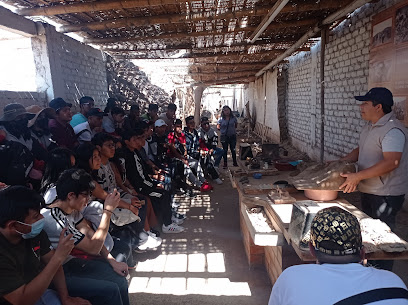
Tienda Avalanch Nasca
Explore the vibrant clothing styles of Nazca at Tienda Avalanch, where culture meets fashion in the heart of Peru's intriguing landscape.
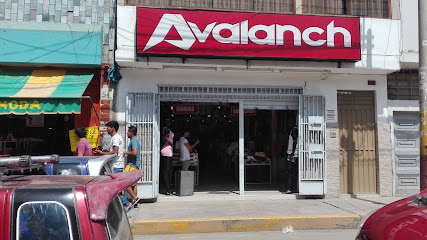
Moños y botones
Explore Moños y Botones in Nazca for unique gifts that capture the spirit of Peruvian culture with handcrafted souvenirs and local artistry.
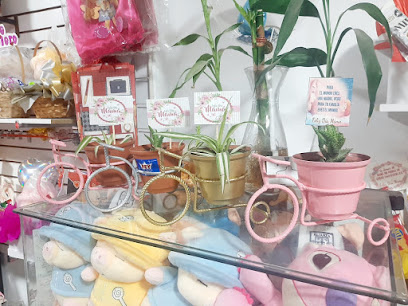
Carsa
Discover the best electronics and gadgets at Carsa in Nazca, Peru, where technology meets convenience and expert advice.
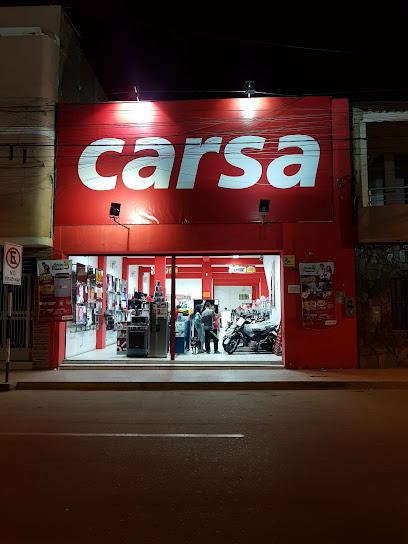
Mi gatita elsy
Explore Mi Gatita Elsy, Nazca's charming general store, offering unique local products and a warm community atmosphere.
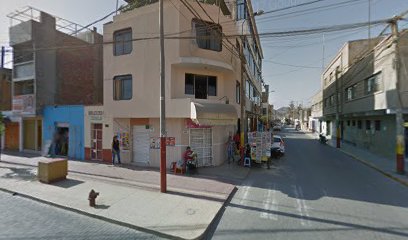
Bazar Joyeria Juanita
Explore the exquisite jewelry of Bazar Joyeria Juanita, a must-visit store in Nazca showcasing authentic Peruvian craftsmanship.
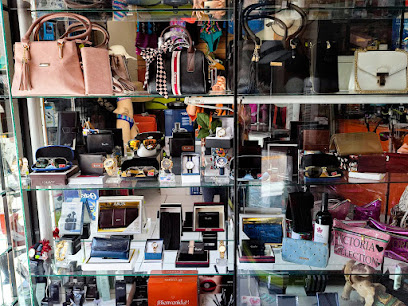
Lobo Shop Perú
Explore Lobo Shop Perú for a vibrant selection of clothing and accessories that reflect the rich culture and style of Peru in Nazca.
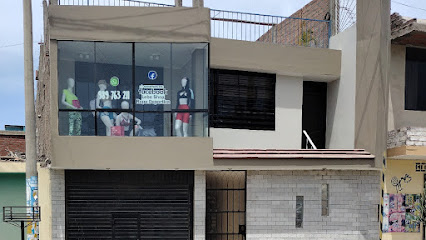
STEFANO STORE
Discover the latest fashion trends at STEFANO STORE in Nazca, offering unique clothing and accessories for every style in a welcoming atmosphere.

Rossy Clouss
Explore Rossy Clouss in Nazca for unique clothing that captures the essence of Peruvian culture and fashion.
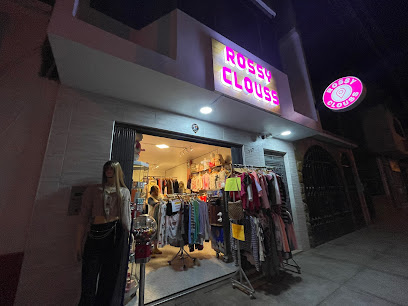
Essential bars & hidden hideouts
Casa Del Pisco Garcia
Experience the vibrant culture of Nazca at Casa Del Pisco Garcia, where every sip tells a story of Peruvian heritage and flavor.
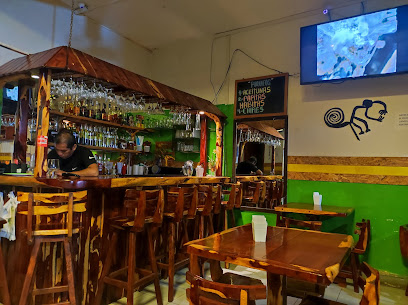
Nazkaterra Nazca
Experience the vibrant nightlife at Nazkaterra Nazca, a lively bar with a fantastic drink selection in the heart of Nazca, Peru.
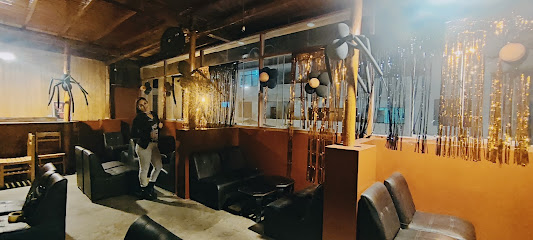
The Bunker
Discover the vibrant nightlife of Nazca at The Bunker, a lively karaoke bar perfect for music lovers and night owls.
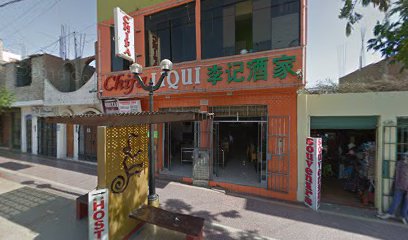
DeepBar Nasca
Discover the vibrant nightlife of Nasca at DeepBar, where great drinks and a lively atmosphere await every visitor.
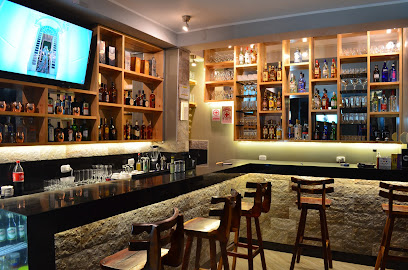
Barzobia
Experience the vibrant nightlife at Barzobia in Nazca, where local culture meets an inviting atmosphere for unforgettable evenings.
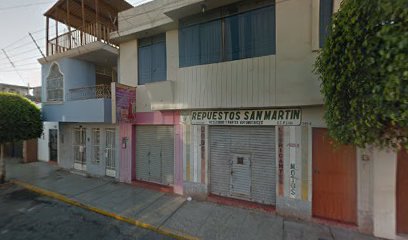
BetSport -
Discover BetSport, Nazca's premier sports bar, where sports, food, and fun unite for an unforgettable experience.
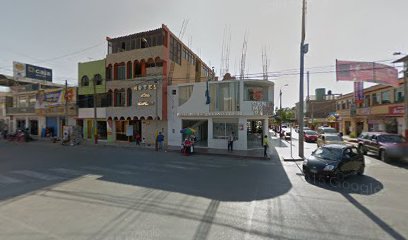
Séptima Ronda
Savor the essence of Nazca at Séptima Ronda, a gastropub offering a delightful fusion of traditional and modern culinary experiences.

Licorería El Punto Vip
Discover the vibrant nightlife of Nazca at Licorería El Punto Vip, where friendly service and an extensive drink menu await.
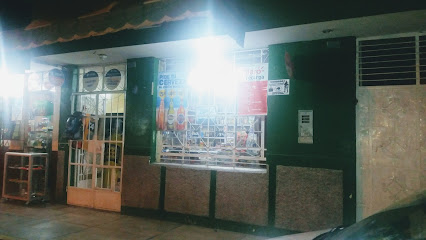
Bartoletto Restobar
Experience the vibrant culinary scene of Nazca at Bartoletto Restobar, where local flavors and a welcoming atmosphere await.

Thiagorestobar
Discover the culinary magic of Thiagorestobar, a vibrant gastropub in Nazca that fuses local traditions with global flavors.
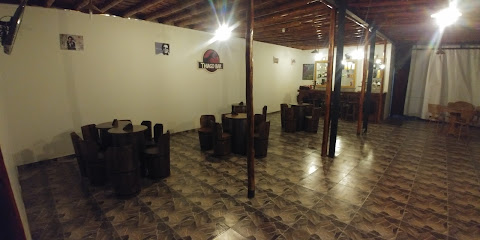
Licoreria La Taberna
Discover the vibrant atmosphere of Licoreria La Taberna in Nazca, a bar where local flavors and lively ambiance meet for an unforgettable experience.
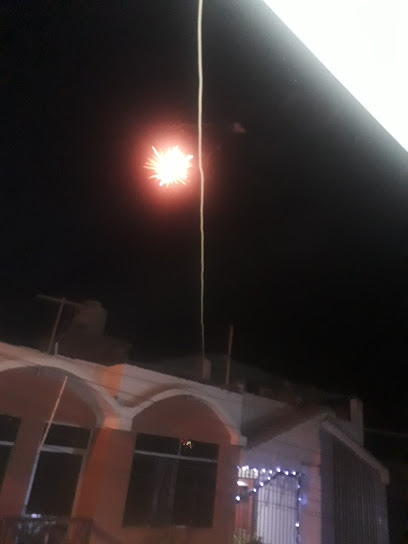
Nazkaterra nazka
Experience local culture at Nazkaterra Nazka, a vibrant bar in Nasca, Peru, serving delicious snacks and refreshing drinks in a lively atmosphere.
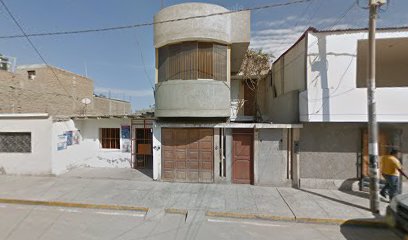
regosillo del loro
Experience the vibrant atmosphere of Regosillo del Loro, a lively bar in Nazca, offering local drinks and a taste of Peruvian culture.
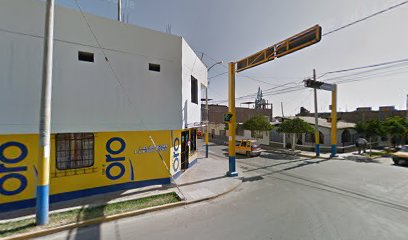
D'Castro Bar
Experience the vibrant nightlife of Nazca at D'Castro Bar, where locals and tourists come together over delicious drinks and lively entertainment.
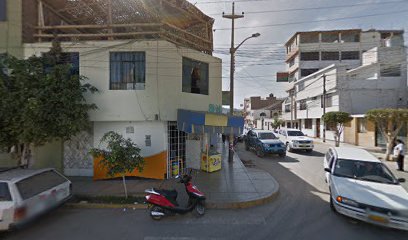
CENTRAL'S RESTOBAR NAZCA
Discover the vibrant flavors of Peru at Central's Restobar Nazca, a lively gastropub offering exquisite local cuisine and a welcoming atmosphere.

Local Phrases about Nazca Lines
-
- Hello¡Hola!
[O-lah] - Goodbye¡Adiós!
[Ah-dee-ohs] - YesSí
[See] - NoNo
[Noh] - Please/You're welcomePor favor/De nada
[Por fah-vor/De nah-dah] - Thank youGracias
[Grah-see-ahs] - Excuse me/SorryPerdón/Lo siento
[Pair-dohn/Loh see-en-toh] - How are you?¿Cómo estás?
[Koh-moh ehs-tahs] - Fine. And you?Bien. ¿Y tú?
[Byen. Ee too] - Do you speak English?¿Hablas inglés?
[Ah-blahs een-glays] - I don't understandNo entiendo
[Noh ehn-tee-ehn-doh]
- Hello¡Hola!
-
- I'd like to see the menu, pleaseMe gustaría ver el menú, por favor
[May goo-stah-ree-ah vehr el meh-noo, poor fah-vor] - I don't eat meatNo como carne
[Noh koh-moh kahr-neh] - Cheers!¡Salud!
[Sah-lood] - I would like to pay, pleaseMe gustaría pagar, por favor
[May goo-stah-ree-ah pah-gahr, poor fah-vor]
- I'd like to see the menu, pleaseMe gustaría ver el menú, por favor
-
- Help!¡Ayuda!
[Ah-yoo-dah] - Go away!¡Vete!
[Veh-teh] - Call the Police!¡Llama a la Policía!
[Yah-mah ah lah Poh-lee-see-ah] - Call a doctor!¡Llama a un doctor!
[Yah-mah ah oon dohk-tohr] - I'm lostEstoy perdido
[Ehs-toy pair-dee-doh] - I'm illEstoy enfermo
[Ehs-toy ehn-fehr-moh]
- Help!¡Ayuda!
-
- I'd like to buy...Me gustaría comprar...
[May goo-stah-ree-ah kohm-prahr...] - I'm just lookingSolo estoy mirando
[So-loh ehs-toy mee-rahn-doh] - How much is it?¿Cuánto cuesta?
[Kwan-to kwehs-tah] - That's too expensiveEso es muy caro
[Eh-so es moo-ee kah-roh] - Can you lower the price?¿Puedes bajar el precio?
[Pweh-dehs bah-har el pree-syoh]
- I'd like to buy...Me gustaría comprar...
-
- What time is it?¿Qué hora es?
[Keh oh-rah es] - It's one o'clockEs la una
[Es lah oo-nah] - Half past (10)Y media (10)
[ee meh-dee-ah (dheez)] - MorningMañana
[Mah-nyah-nah] - AfternoonTarde
[Tahr-deh] - EveningNoche
[Noh-cheh] - YesterdayAyer
[Ah-yehr] - TodayHoy
[Oy] - TomorrowMañana
[Mah-nyah-nah] - 1Uno
[Oo-noh] - 2Dos
[Dohs] - 3Tres
[Tres] - 4Cuatro
[Kwah-troh] - 5Cinco
[Seen-koh] - 6Seis
[Says] - 7Siete
[Syeh-teh] - 8Ocho
[Oh-choh] - 9Nueve
[Nweh-veh] - 10Diez
[Dyehs]
- What time is it?¿Qué hora es?
-
- Where's a/the...?¿Dónde está...?
[Dohn-deh ehs-tah] - What's the address?¿Cuál es la dirección?
[Kwahl es lah dee-rehk-see-ohn] - Can you show me (on the map)?¿Puedes mostrarme (en el mapa)?
[Pweh-dehs mohs-trar-meh (en el mah-pah)] - When's the next (bus)?¿Cuándo es el próximo (autobús)?
[Kwan-doh es el proh-see-moh (ow-toh-boos)] - A ticket (to ....)Un boleto (a ...)
[Oon boh-leh-toh (ah ...)]
- Where's a/the...?¿Dónde está...?
History of Nazca Lines
-
The Nazca Lines are a series of large ancient geoglyphs located in the Nazca Desert in southern Peru. Created by the Nazca culture between 500 BCE and 500 CE, these lines are made by removing the reddish-brown iron oxide-coated pebbles that cover the surface of the Nazca Desert and exposing the lighter-colored earth beneath. The purpose of these lines, which include various shapes such as animals, plants, and geometric patterns, remains a mystery to this day.
-
The Nazca Lines were first brought to widespread attention in the 1920s when Peruvian archaeologist Toribio Mejia Xesspe stumbled upon them while hiking through the foothills. It wasn't until the advent of aircraft that their full scope and grandeur could be appreciated. In the 1940s, American historian Paul Kosok began studying the lines from the air, and his work paved the way for further investigations by researchers like Maria Reiche, who dedicated her life to uncovering the secrets of these enigmatic designs.
-
The construction of the Nazca Lines required meticulous planning and execution. The Nazca people used wooden stakes tied with cords to create long, straight lines and geometric shapes. The removal of the dark, rocky surface revealed the lighter soil beneath, creating a stark contrast visible from above. The preservation of these lines over centuries can be attributed to the extremely dry, windless, and stable climate of the Nazca Desert.
-
Various theories have been proposed to explain the purpose of the Nazca Lines. Some researchers believe they had an astronomical function, possibly aligning with celestial events or serving as a giant astronomical calendar. Others suggest they were part of religious or ceremonial practices, pointing to the presence of figures associated with fertility and water. Another theory posits that the lines functioned as pathways for ritual processions. Despite extensive research, the true purpose of the Nazca Lines remains speculative.
-
The Nazca Lines hold immense cultural significance for the indigenous people of Peru. They are a testament to the ingenuity and creativity of the Nazca civilization, which thrived in one of the most arid regions on Earth. The lines are often viewed as a symbol of the deep connection between the Nazca people and their environment, reflecting their sophisticated understanding of their landscape and its resources.
-
Given their cultural and historical importance, efforts have been made to preserve the Nazca Lines. In 1994, UNESCO designated the Nazca Lines as a World Heritage Site, recognizing their value to humanity. Peruvian authorities and international organizations have implemented measures to protect the lines from threats such as urban development, illegal mining, and tourism-related damage. Ongoing research and conservation projects aim to ensure that these ancient wonders endure for future generations to admire and study.
Nazca Lines Essentials
-
Nazca is located in the Ica region of southern Peru. The nearest major airport is Jorge Chávez International Airport in Lima, about 450 kilometers away. From Lima, you can take a bus to Nazca, which typically takes around 7 to 8 hours. Several bus companies like Cruz del Sur, Oltursa, and Soyuz offer comfortable and frequent services. Alternatively, you can rent a car and drive, but be prepared for long stretches of desert road.
-
Nazca is a small town, and most attractions, including the Nazca Lines, are a short distance away. Taxis are readily available and inexpensive. For a more immersive experience, you can rent a bicycle or join a guided tour. Tours often include transportation to and from the Lines. For the ultimate view, consider taking a small plane tour, which offers aerial views of the geoglyphs.
-
The official currency in Peru is the Peruvian Sol (PEN). Credit cards are accepted in most hotels, restaurants, and larger shops, but it is advisable to carry cash for smaller purchases and in more remote areas. ATMs are available in Nazca, but it's wise to withdraw sufficient cash in Lima or Ica to ensure you have enough funds for your trip.
-
Nazca is generally safe for tourists, but standard precautions should be taken. Avoid walking alone at night in unfamiliar areas and keep an eye on your belongings in crowded places. While Nazca itself doesn’t have specific high-crime areas, always stay vigilant and aware of your surroundings. Petty theft can occur, particularly in bus stations and tourist spots.
-
In case of emergency, dial 105 for the police or 116 for medical emergencies. Nazca has a local hospital and several clinics for minor health issues. It is highly recommended to have travel insurance that covers medical emergencies. Pharmacies are available in town where you can purchase over-the-counter medications.
-
Fashion: Do dress comfortably and in layers, as the desert climate can vary from hot during the day to cool at night. Avoid wearing overly revealing clothing. Religion: Do respect local customs and traditions. Public Transport: Do be respectful and courteous to drivers and fellow passengers. Don’t eat or drink on public transport. Greetings: Do greet people with a friendly 'Hola' or 'Buenos días.' A handshake is common. Eating & Drinking: Do try local dishes like ceviche and guinea pig. Don’t refuse hospitality, as it is considered impolite.
-
To experience Nazca like a local, visit the local markets where you can buy fresh produce and traditional Peruvian goods. Engage with locals, as they are often friendly and willing to share stories about the town’s history and culture. Don’t miss visiting the Maria Reiche Museum, dedicated to the German mathematician who studied the Nazca Lines extensively. For a unique experience, take a dune buggy tour or try sandboarding in the nearby desert.
Trending Landmarks in Nazca Lines
-
Plaza de Armas de Nazca
-
Mirador De Las Líneas De Nazca
-
Aeronasca - Nazca Lines - Lineas de Nazca
-
Museo Maria Reiche
-
Museo Arqueológico Antonini
-
Acueductos de Cantalloc
-
Los Paredones
-
Chauchilla Cemetery
-
Ciudad Perdida de Cahuachi
-
Nazca Spider
-
The Hummingbird (Nazca Lines)
-
Loom in good faith
-
Cerro Blanco
-
나스카 지상화
-
Nazca Spiral
Nearby Cities to Nazca Lines
-
Things To Do in Ayacucho
-
Things To Do in Huancayo
-
Things To Do in Machu Picchu
-
Things To Do in Lima
-
Things To Do in Cusco
-
Things To Do in Arequipa
-
Things To Do in Puno
-
Things To Do in Tacna
-
Things To Do in Huaraz
-
Things To Do in Arica
-
Things To Do in Copacabana
-
Things To Do in La Paz
-
Things To Do in Iquique
-
Things To Do in Trujillo
-
Things To Do in Cochabamba










